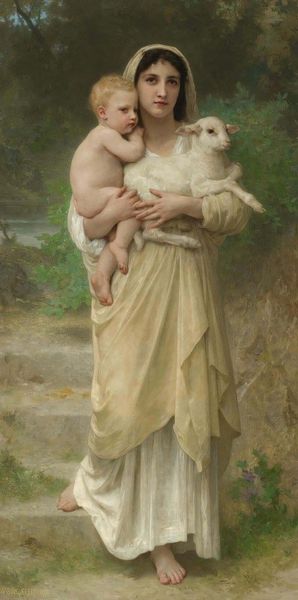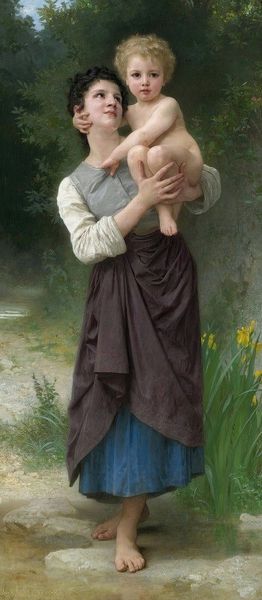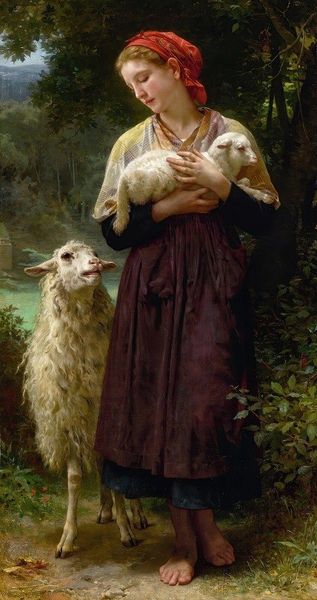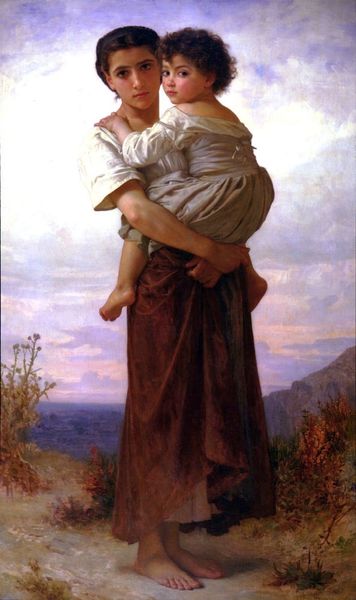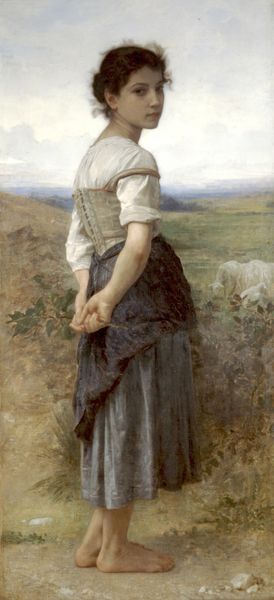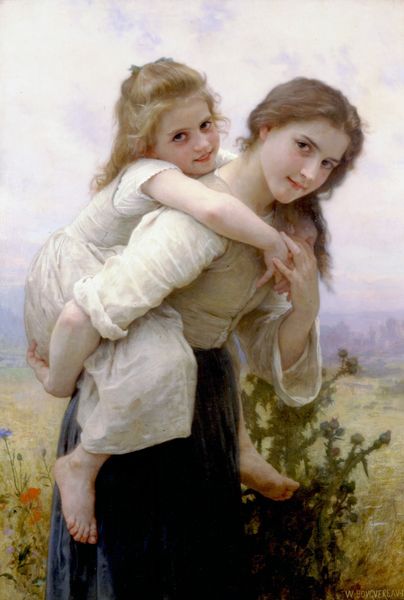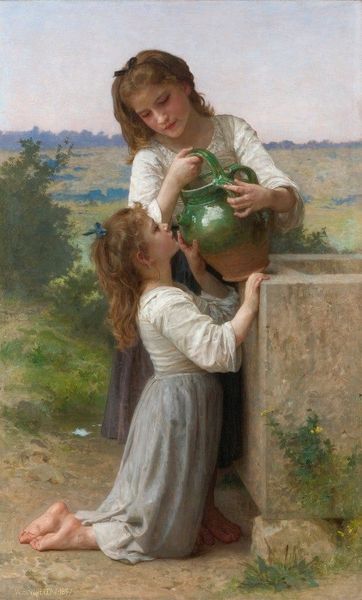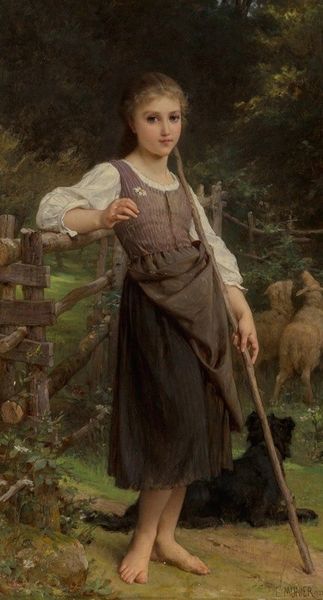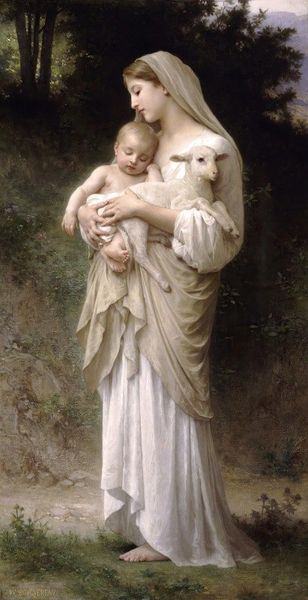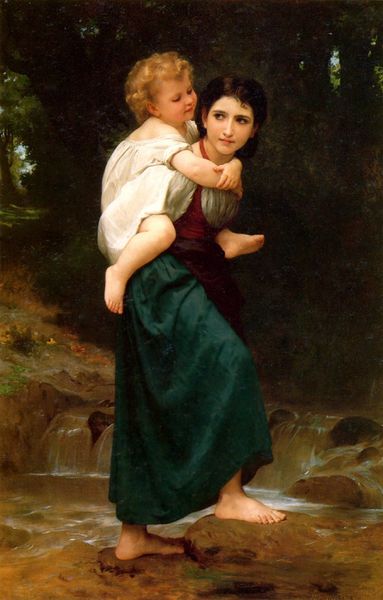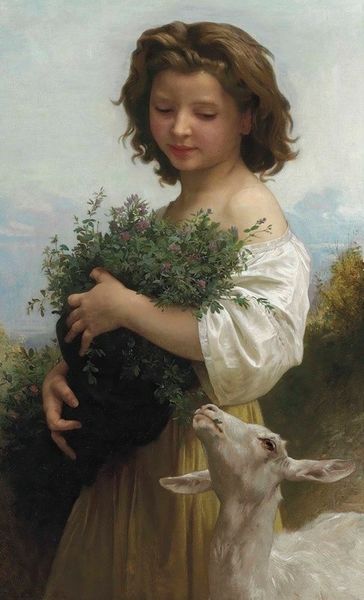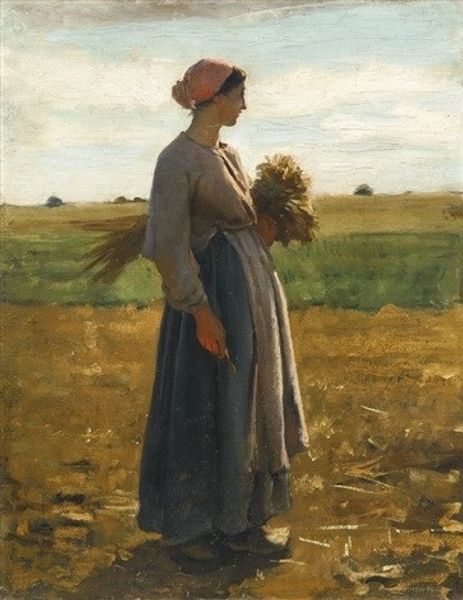
painting, oil-paint
#
portrait
#
figurative
#
painting
#
oil-paint
#
landscape
#
figuration
#
academic-art
#
realism
Copyright: Public Domain: Artvee
Editor: This is William Bouguereau's "Jeune bergère debout," painted in 1887, rendered in oil paint. There’s a contemplative stillness to her posture; it feels romantic, almost like an idealized memory. How do you interpret this work? Curator: The young shepherdess is rendered in such detail that she seems timeless. She leans on her staff, seemingly a common, simple tool, but I am intrigued by the rod, or staff. What does this staff mean to you? Do you associate it with any traditional symbolism? Editor: It looks biblical, almost. I mean, staffs often seem to signal authority, maybe she's not just a shepherdess. Curator: Indeed. In art, and religion, a rod has signified protection and guidance, but what's interesting to me here is how that intersects with societal expectations of young women in that period. What I'm seeing are allusions to innocence. How is she also an active agent and someone that reflects cultural continuity? Bouguereau may also invite us to consider the role of women as carriers of tradition. Does the gaze that the girl offers to the viewer reveal to us something more? Editor: It feels a little defiant. I like that contrast—innocent, yet powerful. It's almost revolutionary in a quiet way. Curator: The visual language offers such layered interpretation and makes me question our assumptions, too. The power of cultural memory is evoked through a simple figure and rural backdrop. What remains is the continuity of human connection. Editor: I never thought I could get so much out of this, there are clearly so many depths that were hidden in plain sight. I’ll never look at a staff the same way!
Comments
No comments
Be the first to comment and join the conversation on the ultimate creative platform.
